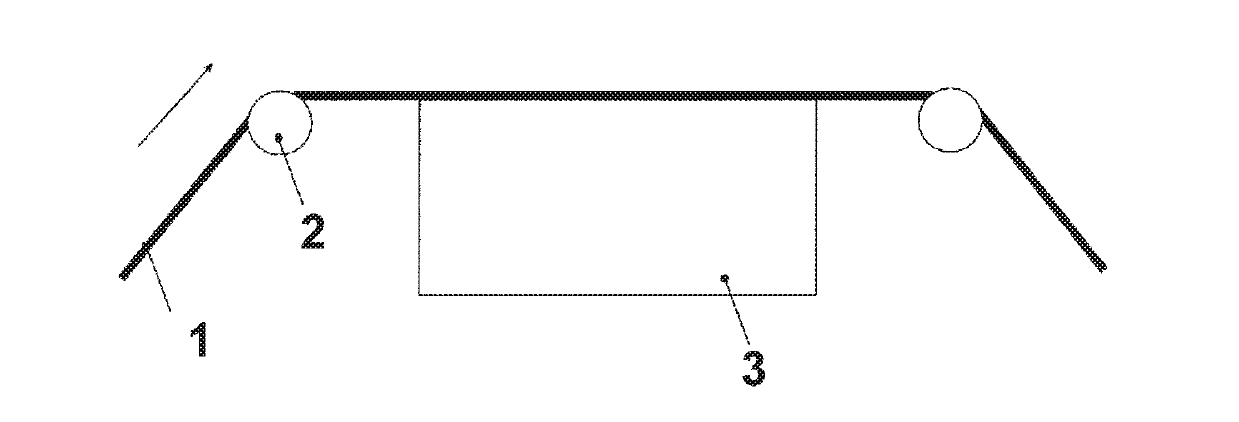Magnetic tape having characterized backcoat layer and method of manufacturing the same
a backcoat layer and magnetic tape technology, applied in the field of magnetic tapes, can solve the problems of edge damage, edge damage, edge damage, etc., and achieve the effect of low dropout and high electromagnetic characteristics
- Summary
- Abstract
- Description
- Claims
- Application Information
AI Technical Summary
Benefits of technology
Problems solved by technology
Method used
Image
Examples
example 1
[0188]A 3.0 part quantity of 2,3-dihydroxynaphthalene (made by Tokyo Chemical Industry Co., Ltd.), 31.3 parts of a 32% solution (with a mixture of methyl ethyl ketone and toluene as solvent) of polyester polyurethane resin (UR-4800 (polar group quantity: 80 meq / kg) made by Toyobo (Japanese registered trademark)), and 570.0 parts of a solvent in the form of a 1:1 (weight ratio) mixed solution of methyl ethyl ketone and cyclohexanone were mixed with 100.0 parts of alumina powder (HIT-70 made by Sumitomo Chemical Company, Ltd. having an alpha conversion rate of above 65% and a BET specific surface area of 30 m2 / g) and the mixture was dispersed for 5 hours in a paint shaker in the presence of zirconia beads. Following dispersion, the dispersion and the beads were separated with a mesh, yielding an alumina dispersion.
[0189]2. Formula of Magnetic Layer-Forming Composition
[0190]
(Magnetic liquid)Ferromagnetic hexagonal barium ferrite powder100.0partsFerromagnetic hexagonal barium ferrite po...
examples 2 to 13
, Comparative Examples 1 to 11
[0202]With the exceptions that the formulas of the various layer-forming compositions and / or manufacturing conditions were changed to those shown in Table 1, magnetic tapes were prepared by the same method as in Example 1. The period during which vibration was imparted was adjusted by changing the conveyance speed of the support on which the coating layers were formed.
[0203]The blending ratio of inorganic powder / carbon black in the backcoat layer recorded in Table 1 is the content based on weight of the various powders relative to 100.0 weight parts of the combined content of inorganic powder and carbon black.
[0204]The blending ratio of ferromagnetic hexagonal barium ferrite powder recorded in Table 1 is the content based on weight of the various ferromagnetic hexagonal barium ferrite powders relative to 100.0 weight parts of the total quantity of ferromagnetic powder. The average particle size of the ferromagnetic hexagonal barium ferrite powder shown ...
PUM
| Property | Measurement | Unit |
|---|---|---|
| surface roughness | aaaaa | aaaaa |
| surface roughness Ra | aaaaa | aaaaa |
| full width at half maximum | aaaaa | aaaaa |
Abstract
Description
Claims
Application Information
 Login to View More
Login to View More - R&D
- Intellectual Property
- Life Sciences
- Materials
- Tech Scout
- Unparalleled Data Quality
- Higher Quality Content
- 60% Fewer Hallucinations
Browse by: Latest US Patents, China's latest patents, Technical Efficacy Thesaurus, Application Domain, Technology Topic, Popular Technical Reports.
© 2025 PatSnap. All rights reserved.Legal|Privacy policy|Modern Slavery Act Transparency Statement|Sitemap|About US| Contact US: help@patsnap.com

